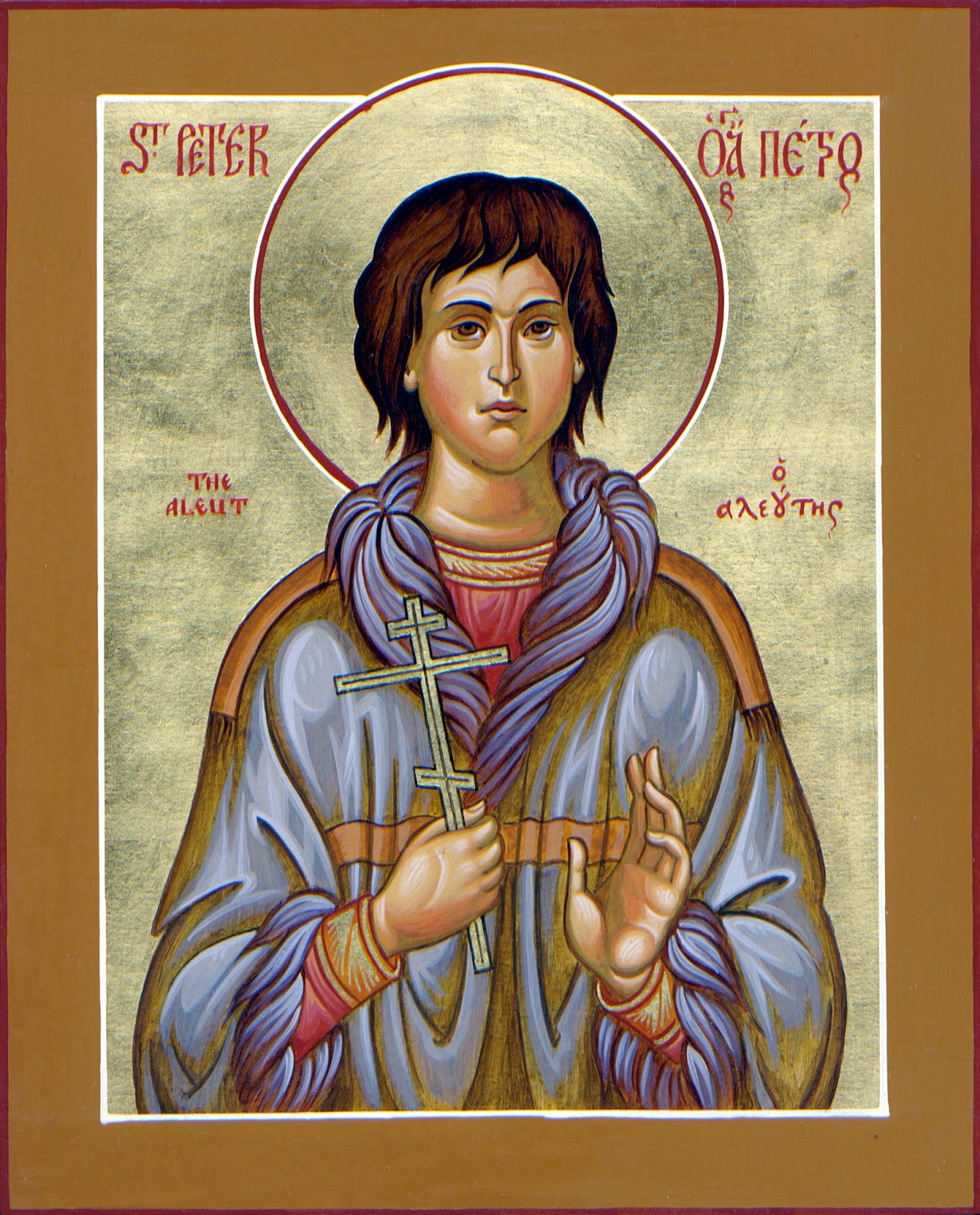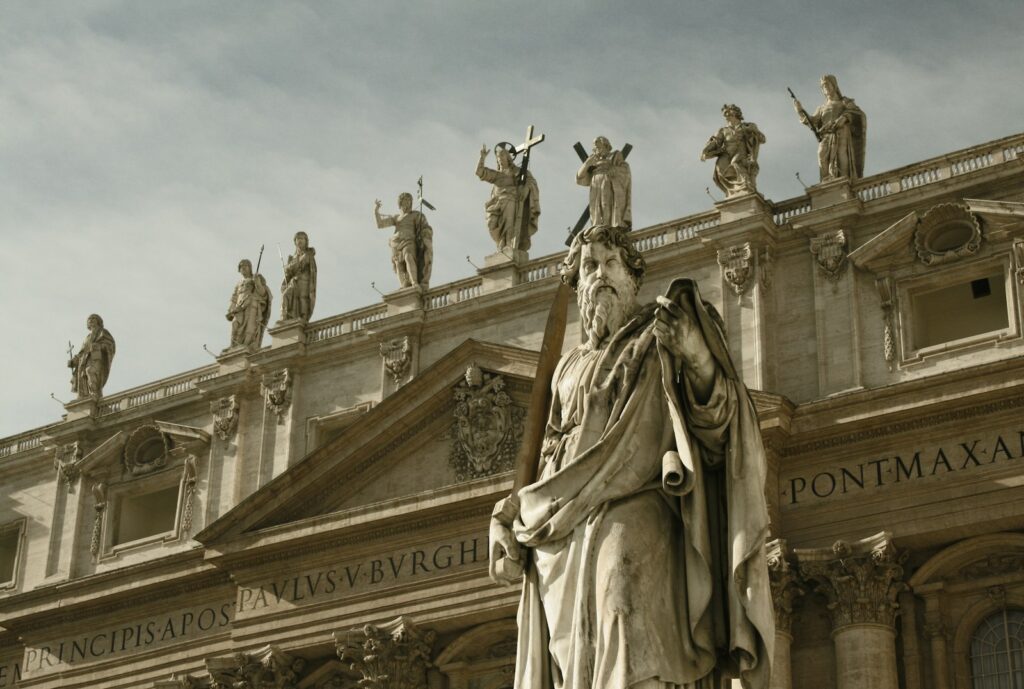When we talk about the titans of religious history, figures who truly shaped the course of centuries, Saint Peter is undeniably in a league of his own. Forget reality TV stars making predictions; this is about a man whose life was a whirlwind of faith, doubt, and ultimate transformation that still resonates with billions today. He was a fisherman from a humble background, plucked from obscurity, and thrust into a role that would forever change the world. His story isn’t just ancient history; it’s a gripping narrative filled with moments so human and relatable, you’d swear it was ripped from today’s headlines.
Before he was the ‘Rock’ upon which a church would be built, he was simply Simon, a man navigating the daily grind with his family. Yet, through a series of extraordinary encounters and deeply personal trials, Simon would become Peter, a central figure in the early Christian movement. His journey is a masterclass in divine calling meeting human imperfection, showcasing a path from ordinary life to extraordinary influence.
So, buckle up, because we’re diving deep into 14 absolutely iconic moments from the life of Saint Peter. From his initial call to his dramatic and poignant end, these are the pivotal points that shaped not only him but the very foundations of the Christian Church. Get ready to uncover the stories behind one of the most compelling figures ever to walk the earth, a true influencer long before social media even existed.
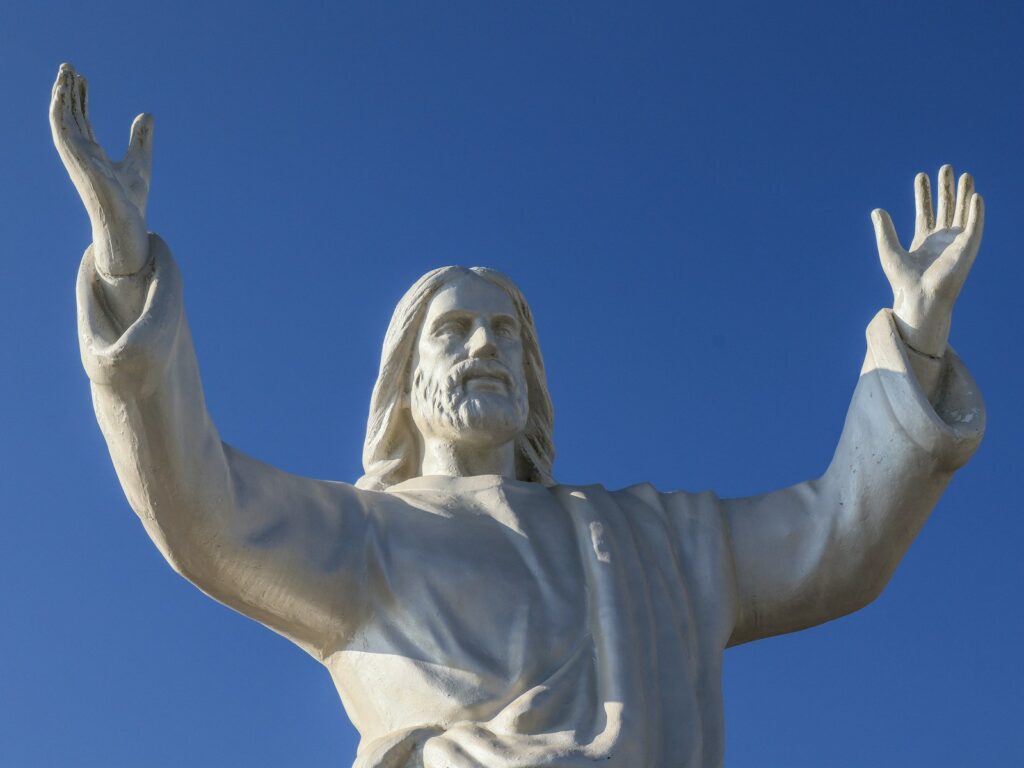
1. **Simon Peter: The Original Hustle – From Fisherman to Future Apostle**Before he became the legendary Saint Peter, a cornerstone of Christian tradition, he was known simply as Simon, son of Jonah or John. This isn’t just a minor detail; it paints a picture of his roots, grounding him in the everyday realities of 1st-century Judea. He was a Jewish fisherman, a hardworking man from Bethsaida, a common occupation that often meant long hours, physical labor, and a close connection to the rhythms of nature.
Simon wasn’t a solitary figure either. The New Testament gives us glimpses into his family life, revealing that he had a brother named Andrew, who would also become one of Jesus’ disciples. What’s more, the Synoptic Gospels, including Mark, Matthew, and Luke, all recount a fascinating detail: Jesus healed Peter’s mother-in-law at their home in Capernaum. This tidbit alone implies that Peter was a married man, or at least a widower living with his extended family, making his eventual devotion to Jesus all the more profound as it meant leaving behind a conventional life.
The fact that he was a family man, rooted in a specific trade, makes his later transformation truly impactful. He wasn’t some isolated ascetic; he was a man with real-world responsibilities and connections. This background allows us to see him as incredibly relatable, a regular guy who, despite his ordinary existence, was destined for an extraordinary calling. His identity as a fisherman shaped his early perspectives and likely his character, preparing him in ways he couldn’t have imagined for the metaphorical fishing he would later do.
First Corinthians 9:5 further supports the idea of Peter being married, implying that he might have even traveled with his wife during his ministry. This intimate detail brings Peter closer to us, showing that even foundational figures of faith had personal lives and relationships that were part of their journey. It adds a layer of humanity to his persona, making his story not just about grand theological concepts, but about a person with a tangible, relatable existence.

2. **The Life-Changing Gig: How Jesus Recruited Peter for a Divine Mission**The moment Jesus encountered Simon and his brother Andrew was nothing short of a seismic shift, not just for them, but for the trajectory of human history. The Synoptic Gospels—Matthew and Mark—paint a vivid picture of this pivotal encounter. Simon, alongside Andrew, and the sons of Zebedee, James and John, were all plying their trade as fishermen, their lives defined by nets, boats, and the waters of the Sea of Galilee. It was here, amidst their daily grind, that Jesus extended an invitation that would redefine their purpose.
Jesus’ call wasn’t just an offer to join a new group; it was a radical reorientation of their entire existence. He famously declared, “Follow me, and I will make you fishers of men.” This powerful metaphor instantly elevated their familiar occupation to a divine mission, shifting their focus from catching fish to drawing people into a spiritual net. The Gospel of John even depicts Peter fishing after Jesus’ resurrection, in the story of the catch of 153 fish, underscoring how deeply ingrained this activity was in his identity, even after his calling.
Luke’s Gospel adds another layer to this narrative, providing a slightly different but equally compelling account. Here, Simon Peter owns the very boat that Jesus uses to preach to the throngs gathered on the shore of Lake Gennesaret. After captivating the multitudes, Jesus directs Simon and his companions, James and John (Andrew isn’t mentioned in this specific Lukean account), to lower their nets into the deep. Despite their earlier unsuccessful efforts, they obediently comply, resulting in an overwhelming catch of fish – so many that their nets began to break.
This miraculous catch served as an undeniable, awe-inspiring demonstration of Jesus’ power, leaving Simon and his companions utterly amazed. Immediately following this incredible display, they left everything to follow him. The Gospel of John offers a comparable, though distinct, account in “The First Disciples,” where Andrew, having heard John the Baptist announce Jesus as the “Lamb of God,” brings his brother Simon to Jesus, who, upon meeting him, immediately names him “Cephas.” Each narrative, while varying in detail, converges on the profound, life-altering moment of Peter’s calling, signifying the beginning of his journey as a core disciple.
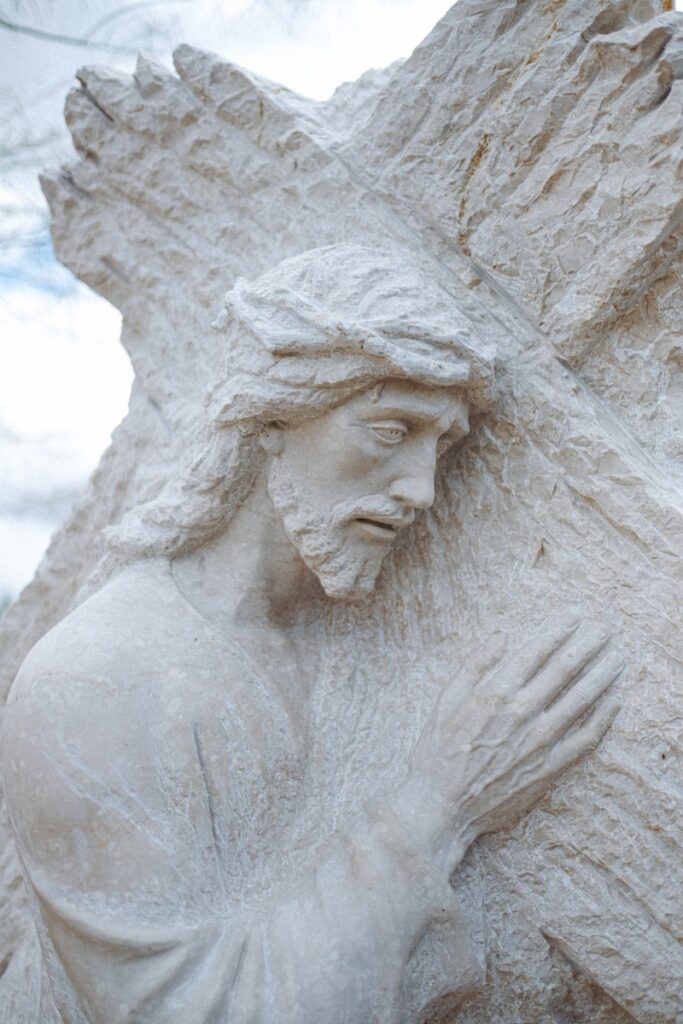
3. **The Ultimate Rebrand: How Simon Became “Peter, the Rock”**Perhaps one of the most iconic and symbolically rich moments in Peter’s life occurred when Jesus bestowed upon him a new name. In the Confession of Peter, as described across the three Synoptic Gospels, Peter boldly declares Jesus to be the Christ, the Jewish Messiah. This wasn’t just a simple statement of belief; it was a profound recognition of Jesus’ divine identity, a turning point in their interactions.
It was in the significant area of Caesarea Philippi that Jesus responded to Simon’s confession with words that would echo through history. He pronounced, “Blessed are you, Simon son of Jonah, for this was not revealed to you by flesh and blood, but by my Father in heaven. And I tell you that you are Cephas (Peter) (Petros), and on this rock (petra) I will build my church, and the gates of Hades will not overcome it.” This renaming wasn’t merely cosmetic; it was a prophetic declaration of Peter’s future role and significance.
The name “Cephas” comes from the Aramaic word ‘Kepha,’ meaning ‘rock’ or ‘stone.’ In Greek translations of the Bible, this was rendered as ‘Petros,’ from the Greek and Latin word for a rock or stone (‘petra’), with a masculine ending added. While the precise meaning of the Aramaic word has been a subject of scholarly discussion—some arguing for ‘crag’ or ‘rock,’ others for ‘stone’ or even a ‘jewel’—most scholars agree that, as a proper name, it signifies a ‘rough’ or ‘tough character.’
Catholic theologian Rudolf Pesch suggested ‘precious stone’ to denote a distinguishing person, though this interpretation is not widely supported by Aramaic usage. Regardless of the exact nuance, the overarching implication is clear: Simon, the fisherman, was being transformed into something solid, enduring, and foundational. This symbolic renaming of Simon to Peter marked him as a person of significance and stability, intended to play a critical role in the nascent Christian movement.
This moment became the cornerstone for the concept of apostolic succession and the institutional power attributed to Peter in various Christian traditions. Even the combined name “Simon Peter” appears 19 times in the New Testament, solidifying this new identity. His new name, Peter, became synonymous with strength and foundational leadership, an identity that would define his legacy for millennia.

4. **Stepping Out in Faith (and Sinking a Little): Peter’s Epic Walk on Water**Imagine the scene: Jesus, walking on the tumultuous waters, defying every law of nature. It’s a moment of sheer awe, recounted in three of the four Gospels—Matthew, Mark, and John. But Matthew’s account offers an extra layer of human drama, featuring none other than Peter stepping into the spotlight, quite literally. When Peter sees Jesus on the water, he doesn’t just marvel from the boat; he boldly cries out, “Lord, if it is you, command me to come to you on the water.” And Jesus responds with a simple, powerful, “Come.”
In an astonishing display of faith and courage, Peter actually steps out of the boat and begins to walk on the water toward Jesus. This moment captures the very essence of Peter’s character: impulsive, daring, and deeply committed, yet also prone to the most human of frailties. For a brief, incredible moment, he transcends the physical limitations, truly walking by faith.
However, the narrative takes a relatable turn. As Peter focuses on the strong wind and the crashing waves around him, his faith wavers. The fear sets in, and he begins to sink. It’s a stark reminder that even the most devout among us can lose sight of the divine amidst life’s storms. His cry of “Lord, save me!” is a raw, desperate plea that many can identify with when overwhelmed.
Jesus immediately reaches out, pulls him up, and then delivers a gentle rebuke: “O you of little faith, why did you doubt?” This isn’t just a chastisement; it’s a lesson for Peter and for all who follow. It highlights that faith, while powerful, is also a continuous journey, often tested and sometimes faltering. Yet, the story doesn’t end with Peter sinking; it ends with Jesus saving him, emphasizing grace and immediate intervention.
This episode profoundly illustrates Peter’s complex nature. He is simultaneously the daring disciple who attempts the impossible and the vulnerable individual whose faith can falter. It sets him up as an “exemplar of ‘little faith'” but also, in light of the Easter event, as an “exemplar of the forgiven sinner.” His walk on water is a powerful parable of what happens when we fix our eyes on Jesus, and what happens when we look away.

5. **Awkward Dinner Party Moment: Peter’s Foot-Washing Faux Pas at the Last Supper**The Last Supper, a meal forever etched in history, was filled with profound symbolism, not least of which was Jesus’ unexpected act of washing his disciples’ feet. This wasn’t just a hygienic practice; it was a deeply humble gesture of service, traditionally performed by the lowest servant in a household. And, predictably, Peter had something to say about it.
When Jesus approached him, Peter, ever the outspoken and passionate one, initially refused to let Jesus wash his feet. It was an act of what he likely perceived as profound respect, feeling utterly unworthy of such a gesture from his Lord and teacher. His immediate reaction was, “You shall never wash my feet!” This wasn’t defiance born of malice, but perhaps a misdirected sense of deference and discomfort with seeing his Master in such a lowly posture.
However, Jesus’ response was direct and impactful: “If I wash thee not, thou hast no part with me.” This statement immediately reframed the act, revealing its spiritual significance. It wasn’t just about physical cleansing; it was about spiritual communion and participation in Jesus’ mission. Peter, ever eager to be fully included, quickly reversed his position with characteristic fervor, exclaiming, “Lord, not my feet only, but also my hands and my head!”
This exchange beautifully captures Peter’s evolving understanding of discipleship. His initial resistance stemmed from a conventional understanding of hierarchy, but his quick embrace showed a heart willing to learn and submit to Jesus’ deeper teachings. It highlights his desire to be fully connected to Jesus, even if it meant abandoning his previous notions of propriety.
This very act of foot washing is not just a historical event; it’s a powerful tradition that continues to be repeated in services of worship, particularly on Maundy Thursday, by some Christian denominations. It serves as a lasting reminder of humility, service, and the radical nature of Christ’s love, all underscored by Peter’s memorable, if initially awkward, interaction.

6. **Gethsemane’s Showdown: Peter’s Sword, Malchus’ Ear, and Jesus’ Peaceful Power**The Garden of Gethsemane was a place of profound anguish and betrayal, culminating in Jesus’ arrest. In this moment of intense tension, Peter, true to his impulsive and fiercely loyal nature, didn’t stand idly by. The three Synoptic Gospels—Matthew, Mark, and Luke—all mention that one of Jesus’ companions drew a sword and cut off the ear of a servant of the High Priest of Israel. But it’s the Gospel of John that gives us the definitive scoop, naming Peter as the swordsman and the unfortunate victim as Malchus.
This act was a desperate, if ill-conceived, attempt by Peter to defend his beloved teacher. It shows his readiness to fight, to literally take up arms in the face of injustice and aggression. He was prepared to resist, to prevent the inevitable capture of Jesus, embodying a zeal that, while admirable in its loyalty, was not aligned with Jesus’ non-violent path. It was a raw, human reaction to a terrifying situation, showcasing Peter’s fierce protective instincts.
Luke’s Gospel adds a miraculous dimension to this already dramatic scene. It records that Jesus, in an act of profound compassion and power even amidst his own arrest, touched the severed ear and miraculously healed it. This incredible detail underscores Jesus’ commitment to peace and healing, even for his captors, and stands as the last of the 37 miracles attributed to Jesus in the Bible. It’s a powerful contrast between Peter’s human impulsivity and Jesus’ divine, calm authority.
This incident is more than just an action-packed moment; it’s a crucial teaching point. Jesus’ healing of Malchus’ ear served as a rebuke to violence and a demonstration of his kingdom’s values, which were diametrically opposed to worldly power struggles. Peter’s impulsive act, quickly corrected by Jesus, highlights the learning curve the disciples were on, transitioning from a worldly understanding of power to a spiritual one.
The Gethsemane incident, with Peter’s sword and Jesus’ healing touch, reveals the complex dynamics at play during that fateful night. It cements Peter as a figure of passionate but sometimes misguided zeal, always eager to act, but still needing to grasp the deeper spiritual truths of his master’s mission. It’s a testament to his passionate character, and Jesus’ profound capacity for grace and peace.
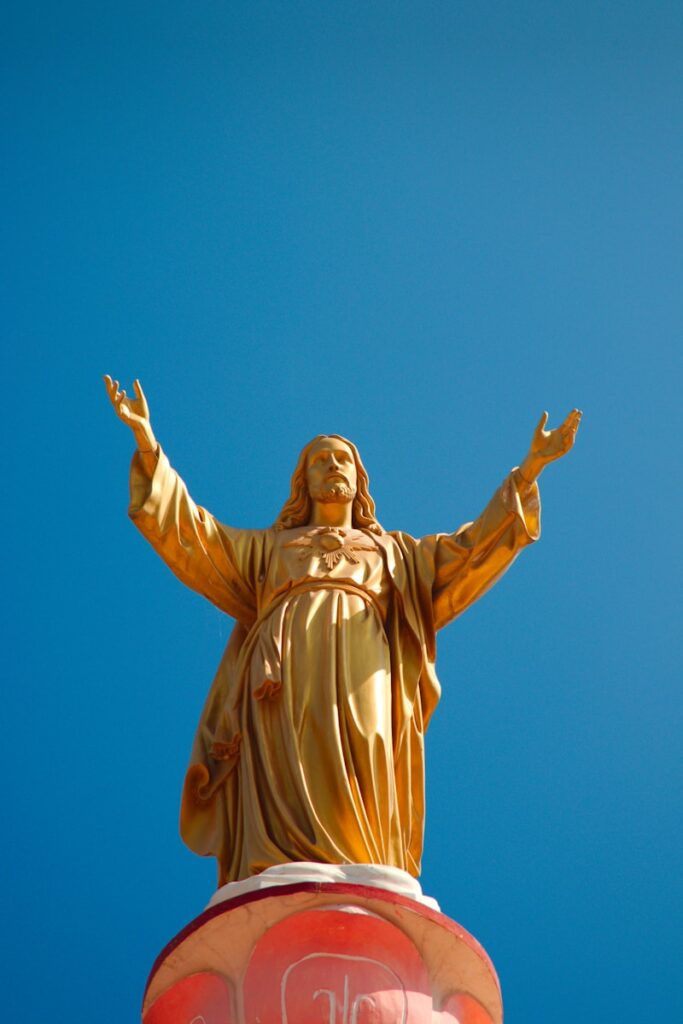
7. **The Heartbreaking Betrayal: Peter’s Three Denials and the Rooster’s Crow**One of the most poignant and humanizing moments in Peter’s journey is his triple denial of Jesus, a stark illustration of human frailty under immense pressure. All four canonical Gospels vividly recount Jesus foretelling this very event during the Last Supper, stating that Peter would deny him three times before the cockcrow—or “before the cock crows twice” in Mark’s particularly detailed account. This prophecy set the stage for one of Peter’s most agonizing tests.
The denials unfolded rapidly, each one chipping away at Peter’s resolve and loyalty. The first came when a female servant of the high priest spotted Simon Peter and accused him of being with Jesus. Under the scrutiny, Peter denied it. According to Mark, it was then that “the rooster crowed,” a chilling reminder of Jesus’ prediction. Luke and John add the detail of Peter warming himself by a fire among other people, making his vulnerability and the public nature of his denial even more pronounced.
His second denial occurred shortly after. As Peter moved to the gateway, either the same servant girl (Mark), another servant girl (Matthew), or a man (Luke and John, though for John, this is the third denial) accused him again. Again, Peter denied any association with Jesus. John notes, “the rooster crowed” after this denial, amplifying the sense of foreboding and the grim march towards the fulfillment of prophecy. The pressure was mounting, and Peter found himself caught in a desperate struggle to protect himself.
The third and final denial was particularly damning, as Peter’s Galilean accent betrayed him. The bystanders used his accent as irrefutable proof that he was indeed a follower of Jesus. Matthew, Mark, and Luke all record that “the rooster crowed” a final time after this denial, solidifying the bitter reality of his actions. Matthew specifically highlights the accent, while Luke slightly deviates by having a third individual, rather than a crowd, accuse Peter. John omits the accent detail, focusing instead on someone claiming to have seen him in the Garden of Gethsemane.
Overwhelmed with guilt and sorrow, Peter wept bitterly. Luke’s Gospel includes a powerful detail: Jesus had told Peter, “Simon, Simon, behold, Satan hath desired to have you, that he may sift you as wheat: but I have prayed for thee, that thy faith fail not: and when thou art converted, strengthen thy brethren.” This passage provides a glimpse into Jesus’ understanding of Peter’s struggle, foreshadowing his fall, but also his eventual restoration and strengthened leadership. Peter’s denials are a powerful, enduring reminder that even the closest disciples can stumble, but also that redemption and renewed purpose are always possible. This raw honesty in the gospels makes Peter’s story resonate deeply, a testament to the messy, yet ultimately triumphant, journey of faith.”
Alright, so we’ve seen Peter’s raw, human journey through incredible highs and soul-crushing lows. From fisherman to a rock, from walking on water to sinking in doubt, and ultimately, from fierce loyalty to a heartbreaking denial. But here’s the kicker: his story doesn’t end there. In fact, what comes next is arguably even more pivotal, transforming him from a flawed follower into the undeniable leader who would help lay the very foundations of global Christianity. This isn’t just about overcoming mistakes; it’s about a phoenix-like rise to a lasting legacy that still influences billions today.
Get ready to dive into the second half of our epic journey through the life of Saint Peter. We’re talking redemption, groundbreaking leadership, missionary triumphs, and the ultimate sacrifice. These next seven moments are where Peter truly cements his status as a titan of faith, proving that even after the biggest stumbles, divine purpose and a resilient spirit can change the entire world.
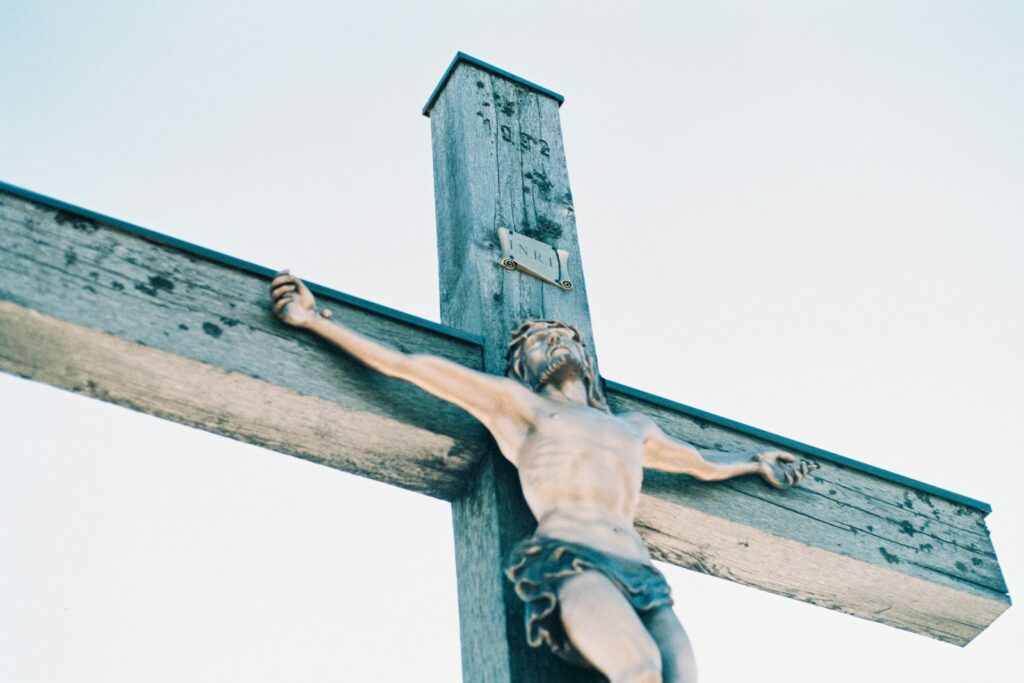
8. **Redemption and Recommissioning: Peter’s Post-Resurrection Journey**After the gut-wrenching pain of his three denials, Peter must have felt like his world had completely crumbled. But here’s where the story takes a truly inspiring turn: Jesus wasn’t done with him. The New Testament makes it clear that Peter was among the very first to witness the risen Christ. Paul’s First Epistle to the Corinthians explicitly lists an appearance to Peter as the first of Jesus’ resurrection encounters, a powerful confirmation that Peter’s position was being restored and that he was still central to God’s plan.
This isn’t just a casual meeting; it’s a profound moment of grace and recommissioning. Imagine the immense relief and renewed hope that must have flooded Peter’s heart. Luke’s account further emphasizes Peter’s eager, if still somewhat bewildered, faith. When the women report the empty tomb, Peter is the only apostle who runs to check for himself, finding the graveclothes and returning home, though perhaps still processing the astonishing news. He’s impulsive, yes, but also undeniably dedicated to verifying the truth.
John’s Gospel beautifully ties Peter’s redemption back to his earlier failures in its poignant epilogue. In a scene at the Sea of Galilee, Jesus engages Peter in a threefold affirmation of love, asking “Simon, son of John, do you love me?” three times. Each “Yes, Lord, you know that I love you” from Peter directly counters one of his earlier denials. And with each affirmation, Jesus reconfirms Peter’s leadership with the powerful command: “Feed my lambs,” “Tend my sheep,” “Feed my sheep.” It’s a full circle moment, erasing the stain of betrayal with a fresh mandate for leadership and care.
This reconfirmation wasn’t just symbolic; it was operational. Peter, forgiven and recommissioned, was now ready to lead. The Church of the Primacy of St. Peter on the Sea of Galilee is traditionally recognized as the site where Jesus established Peter’s supreme jurisdiction over the Christian church, a powerful testament to this pivotal moment. This wasn’t just about Peter regaining his confidence; it was about Jesus setting the stage for Peter to become the foundational leader of the early Christian community, a role he would embrace with unparalleled zeal.
9. **Leading the Charge: Peter’s Role in the Early Jerusalem Church**With his faith renewed and his mission affirmed, Peter truly stepped into his destined role as a foundational leader of the early Church. Far from being sidelined after his denials, he emerged as an indispensable figure, especially within the Jerusalem *ekklesia* (the early Christian community). The Gospels consistently list him first among the Twelve Apostles, and the Book of Acts repeatedly highlights his prominence and authority. He wasn’t just a disciple anymore; he was *the* spokesman, the decision-maker, and the guiding force.
One of his earliest and most crucial acts of leadership, as described in the Book of Acts, was overseeing the election of Matthias to replace Judas among the Twelve. This wasn’t a casual vote; it was a move to ensure apostolic continuity and unity within the nascent group. Peter’s initiative in this process underscores his recognized authority among the apostles, setting a precedent for organized leadership within the emerging Christian movement. He was the one who steered the ship when tough decisions needed to be made.
Catholic scholars, like John Vidmar, emphasize that Peter’s authority indeed superseded that of the other apostles. He acted as their voice in numerous events, and his opinion often proved crucial in significant debates. A prime example of this was the intense discussion surrounding the conversion of Gentiles. In a time when the early Church was still deeply rooted in Jewish tradition, Peter’s perspective on whether Gentiles needed to adhere to Jewish law before becoming Christians was vital, ultimately paving the way for a more inclusive faith.
Peter was not just a figurehead; he was a dynamic leader who actively shaped the direction of the early Church. He formed an informal triumvirate with James the Elder and John, chosen by Jesus to be present at exclusive moments like the Raising of Jairus’ daughter, the Transfiguration, and the Agony in Gethsemane. This inner circle status, coupled with his role as the outspoken confessor of Jesus as the Messiah, solidified his standing as an authoritative, influential, and utterly central figure in the formative years of Christianity.
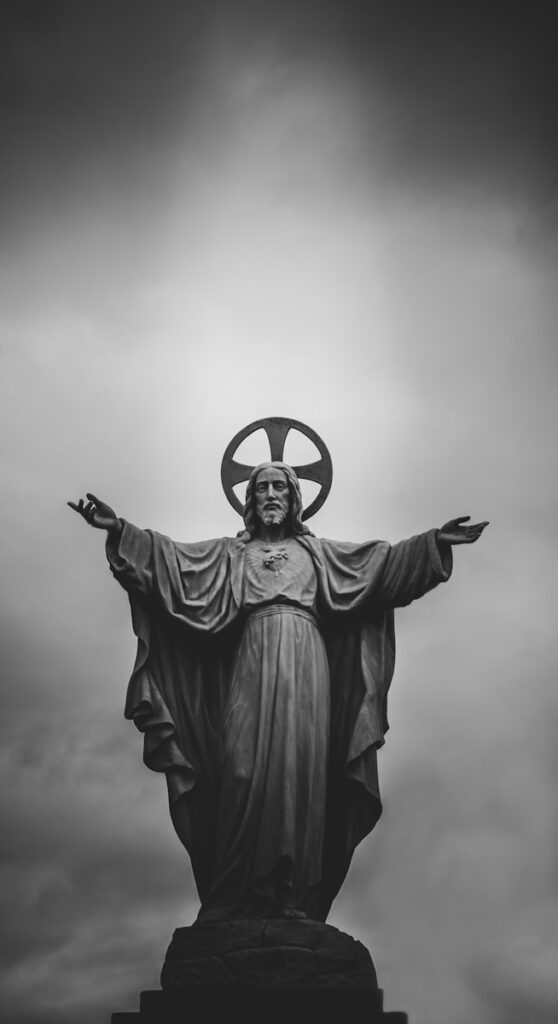
10. **Breaking Barriers: Peter’s Groundbreaking Missionary Outreach to Gentiles**Peter’s journey as a leader wasn’t confined to Jerusalem; it quickly expanded into groundbreaking missionary efforts that would forever change the scope of Christianity. One of the most significant shifts occurred during his travels to regions like Lydda, Joppa, and Caesarea. It was in Joppa where Peter experienced a pivotal vision from God, a moment that blew open the doors of the Church to a whole new world.
The vision was nothing short of revolutionary: Peter saw a sheet descending from heaven, filled with all sorts of previously ‘unclean’ animals, and a voice commanded him to “Kill and eat.” Peter, initially resistant due to Jewish dietary laws, heard the voice declare, “Do not call anything impure that God has made clean.” This wasn’t just about food; it was a profound metaphorical lesson. This divine message directly challenged long-held Jewish customs and prejudices, signaling a new era of inclusivity for the nascent Christian faith.
Immediately following this vision, Peter was called to the home of Cornelius the Centurion, a Roman gentile. This encounter was a direct application of the vision’s message. Peter, realizing that God “shows no partiality,” preached the Gospel to Cornelius and his household. What followed was astounding: the Holy Spirit fell upon these Gentiles, just as it had upon Jewish believers. This event solidified the decision among early believers to evangelize the Gentiles without requiring them to convert to Judaism first.
This was a massive turning point. Peter’s actions and the divine validation he received directly contributed to the early Church’s decision to embrace non-Jews, transforming Christianity from a sect within Judaism into a universal faith. He essentially paved the way for figures like Paul to achieve even greater success in Gentile missions, proving that God’s grace was for everyone, regardless of their background. Peter’s courage to defy tradition, guided by divine revelation, was a testament to his evolving understanding of God’s expansive love.

11. **The Antioch Encounter: When Peter and Paul Clashed on Christian Unity**Even as Peter expanded his missionary horizons, the path of early Christian unity was not always smooth. A particularly famous and dramatic incident unfolded in Antioch, vividly recounted in Paul’s Epistle to the Galatians (2:11). Peter had traveled to Antioch, where, initially, he was happily eating with Gentile believers, embracing the inclusive spirit of the new faith. This was a testament to his own groundbreaking work in welcoming Gentiles into the Church.
However, when certain conservative Jewish Christians arrived from James the Just’s faction in Jerusalem, Peter, out of fear of upsetting them, started to withdraw and separate himself from the Gentile Christians during meals. This sudden shift was a significant step backward, creating a divide where unity had previously flourished. It was a moment where Peter, despite his vision and previous actions, succumbed to social pressure and old traditions, potentially jeopardizing the very inclusivity he had championed.
Paul, ever the staunch advocate for Gentile inclusion, saw this as a direct contradiction of the Gospel message and confronted Peter publicly. He “opposed Peter to his face ‘because he [Peter] was in the wrong’.” This wasn’t just a minor disagreement; it was a high-stakes theological and practical clash over the very nature of Christian fellowship and whether Gentile believers were truly equal. Paul’s bold rebuke highlights the tensions and debates that characterized the early Church’s efforts to define its identity and mission.
Despite this public disagreement, the enduring tradition holds that Peter himself had been the first Patriarch of Antioch, having founded the church there. Writings from Origen and Eusebius confirm Peter’s role in establishing the Antiochian church. This blend of historical foundation and internal conflict underscores the complex dynamics of early Christian leadership. It shows that even pillars of the Church, like Peter and Paul, could have strong disagreements, yet their combined efforts ultimately furthered the spread of the Gospel, even if sometimes through fiery debate.

12. **Rome, the Rock’s Final Destination: Peter’s Connection to the Imperial City**While Peter’s early ministry undoubtedly had strong roots in the East, his journey ultimately led him to the heart of the Roman Empire: the city of Rome itself. Although the New Testament doesn’t explicitly state, “Peter went to Rome,” there’s a compelling clue in his First Epistle. He closes with the greeting, “The church that is at Babylon, elected together with you, saluteth you; and so doth Marcus my son.” Most scholars agree that “Babylon” was a common, symbolic nickname for Rome in Jewish and Christian literature of the time. This subtle reference strongly suggests his presence there.
Beyond biblical hints, a wealth of early Church Fathers unequivocally attest to Peter’s presence and work in Rome. Ignatius of Antioch, a 1st-century writer, refers to Peter and Paul giving admonitions to the Romans, clearly implying Peter’s activity in the city. Irenaeus of Lyons, in the 2nd century, explicitly stated that Peter and Paul were the founders of the Church in Rome, cementing this crucial connection in early Christian tradition.
Clement of Alexandria, writing around 190 AD, further corroborated this, asserting that Peter “had preached the Word publicly at Rome.” Later, Origen and Eusebius would reiterate that Peter, after establishing the church in Antioch, “went away to Rome preaching the Gospel, and he also… presided over that of Rome until his death.” These consistent testimonies from diverse, influential early Christian writers build a formidable case for Peter’s presence and leadership in the imperial capital.
Interestingly, this period in Rome also saw Peter reportedly confront Simon Magus, a figure mentioned in Acts 8 whom Eusebius relates fled to Rome and was revered as a god. According to Eusebius, God sent Peter to Rome specifically to counter Simon Magus, leading to Simon’s eventual defeat. Jerome further dates Peter’s arrival in Rome to the second year of Emperor Claudius, stating he held the “sacerdotal chair” there for twenty-five years until Nero’s reign. This narrative adds a layer of dramatic spiritual warfare to Peter’s Roman sojourn, solidifying his role as a champion against false teachings in the very heart of the empire.
13. **The Papal Legacy: How Peter Became the Foundation of Rome’s Episcopate**The story of Peter in Rome isn’t just about his presence; it’s about the profound legacy he left behind, particularly his foundational connection to the papacy. The Catholic Church, in its teachings, views the Pope, the Bishop of Rome, as the successor of Saint Peter. This interpretation often implies that Peter was the first Bishop of Rome, establishing a line of apostolic succession that continues to this day. It’s a cornerstone of Catholic institutional identity, linking the modern Church directly back to its earliest, apostolic roots.
While the term “Bishop of Rome” might not have been used in the exact same way during Peter’s lifetime, the concept of his unique authority is deeply rooted in Jesus’ words. The famous “Rock” dialogue in Matthew 16:18, where Jesus declares, “You are Cephas (Peter)… and on this rock I will build my church,” forms the theological basis for Peter’s special position. This statement, coupled with Jesus giving Peter “the keys of the kingdom of heaven,” suggests a unique stewardship and leadership role, making him the designated leader for the nascent Christian community.
Early Church Fathers meticulously traced this line of succession from Peter. Irenaeus of Lyons, in his 2nd-century work *Against Heresies*, explicitly names Linus as Peter’s successor, recognizing him as the second Bishop of Rome, followed by Anacletus and Clement of Rome. Similarly, Eusebius notes that Linus succeeded Peter in the Roman episcopate. Even Tertullian, in *Prescription against Heretics*, stated that Clement was “ordained in like manner by Peter” as bishop of Rome, further solidifying the direct link.
This understanding of Peter’s foundational role isn’t merely historical; it’s central to the doctrine of apostolic succession and the institutional power of orthodoxy. As the “chief of the Apostles,” Peter’s leadership forms the basis for the Church’s structure and authority. While other traditions, like the Eastern Orthodox Church, interpret the “rock” reference differently, emphasizing Peter’s confession of faith rather than his personal prominence, the Western tradition firmly anchors the papacy in Peter’s unique and enduring legacy as the first among equals.
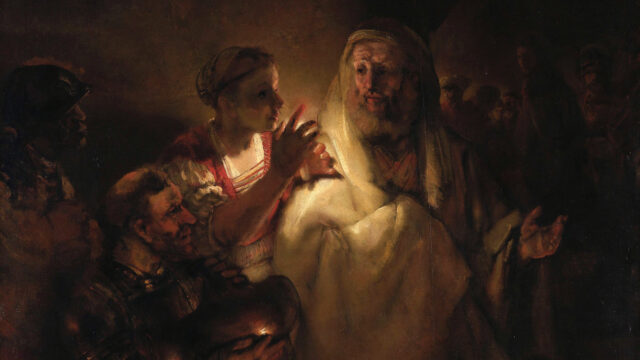
14. **The Ultimate Sacrifice: Peter’s Martyrdom and Enduring Burial Site**Peter’s incredible life, marked by courage, conviction, and deep faith, culminated in the ultimate sacrifice: martyrdom. Even Jesus himself subtly hinted at Peter’s eventual death in the epilogue of John’s Gospel, saying, “But when you grow old, you will stretch out your hands, and someone else will fasten a belt around you and take you where you do not wish to go.” This passage is widely interpreted as a prophecy of Peter’s crucifixion, foretelling the painful manner of his passing.
Early Church tradition provides vivid details, asserting that Peter died by crucifixion in Rome around 64 AD, during the brutal persecutions under Emperor Nero. This was a time of immense hardship for Christians, with Nero notoriously blaming them for the Great Fire of Rome. The traditional site of his execution is Vatican Hill. What’s even more striking is the detail from the apocryphal *Acts of Peter* and later accounts by Origen and Jerome: Peter, considering himself unworthy to die in the same manner as his Lord, requested to be crucified upside down. This act of profound humility became a powerful symbol of his faith.
The legendary “Quo vadis, Domine?” (Where are you going, Lord?) story, preserved in the *Acts of Peter*, further humanizes this fateful decision. As Peter fled Rome to avoid execution, he encountered the risen Jesus, who, in response to Peter’s question, declared he was going to Rome to be crucified again. This divine encounter reputedly gave Peter the courage to turn back, face his fate, and continue his ministry, embracing his martyrdom. The Church of Quo Vadis outside Rome commemorates this powerful moment.
Peter’s burial place became a sacred site, forever etched into Christian history. Tradition firmly locates his tomb directly beneath the high altar of what would become the magnificent Basilica of Saint Peter in Rome. Caius, in 198 AD, spoke of the “trophies of the apostles” at the Vatican. Jerome, in 392 AD, confirmed that “Peter was buried at Rome in the Vatican near the triumphal way where he is venerated by the whole world.” The sheer effort Emperor Constantine I put into building a grand basilica over this precise spot in the early 4th century, even with its challenging slope, underscores the unwavering belief in Peter’s burial site. Furthermore, in 1950, human bones found underneath the altar of St. Peter’s Basilica were claimed by many to be those of Peter, cementing his physical presence in the heart of Catholic tradition. His relics, including filings from his chains and his skull, are revered testaments to his enduring legacy.
From a humble fisherman to the ‘Rock’ upon which a global faith would be built, Saint Peter’s life is a thrilling, messy, and ultimately triumphant saga. He faced extraordinary calls, stumbled in the most human ways, and rose again to lead with unwavering dedication. His story isn’t just ancient history; it’s a timeless reminder that leaders aren’t born perfect, but forged through fire, redemption, and an unshakeable commitment to a purpose far greater than themselves. Peter’s journey—fraught with doubt yet overflowing with grace—continues to inspire, teach, and challenge us, proving that even after the deepest failures, true legacy is built on faith, perseverance, and the courage to say, “Lord, you know that I love you,” even to the very end. Talk about an influencer who left a mark that spans millennia!

